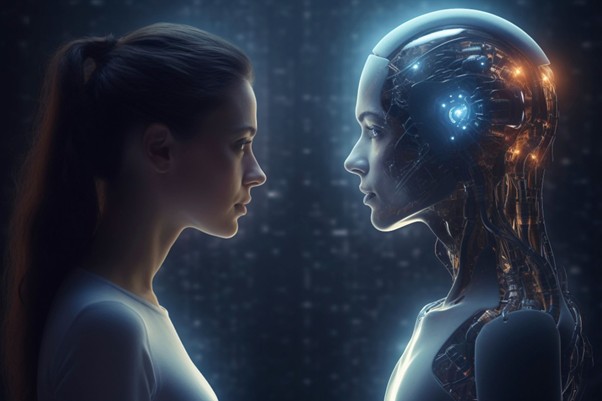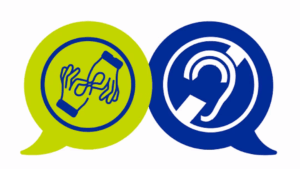How artificial intelligence is changing the world of translation
Artificial intelligence (AI) has made significant strides across various fields, and translation is no exception. Today, we are witnessing advancements in AI technologies applied to translation and interpreting, that are opening up both new opportunities and challenges.
This article will explore how artificial intelligence is influencing translation and interpretation services.
The great advantage of AI in translation lies in its ability to swiftly process text and languages on a massive scale very quickly, something that humans cannot replicate at the same pace. Machine translation tools, powered by sophisticated algorithms and neural networks, have greatly improved their ability to deliver quite good translations. Consequently, the use of machine translation has increased in different jobs, especially when dealing with a lot of multilingual information is required on a daily basis.
Advantages and challenges of AI in Translation and Interpretation
The integration of artificial intelligence into translation and interpretation comes with several advantages. One of the main benefits is the processing capability of AI, which enables large volumes of text to be processed within tight deadlines. Additionally, the use of machine translation simplifies and expedites the management of large multilingual projects while generating a quite accurate translation draft. Another important benefit is the cost efficiency, especially for those projects characterized by repetitive or technical content that requires less nuanced translation.
However, the use of AI also presents disadvantages. One of the main concerns is the lack of understanding of context and culture. Machine-generated translation may struggle with linguistic nuances like humor, irony, or specific cultural references, potentially resulting in inaccurate or inappropriate translations. Furthermore, AI often finds it challenging to identify the ambiguity and artistry inherent in language, which can be problematic for creative advertising or casual dialogues where meaning heavily relies on context and the speaker’s intent. Lastly, achieving precise and high-quality translations in specialized fields can be difficult because of the terminology that often demands extensive subject knowledge.
Will AI replace human translators in the future?
This topic has garnered significant attention lately. Despite the impressive advancements in artificial intelligence, the tasks of translating and interpreting extend beyond mere word substitution. Factors such as cultural context, language intricacies, emotional nuance, and intended meaning are often beyond the capabilities of AI.
Therefore, bridging the gap between what machines and people do when translating and interpreting requires a combination of AI’s abilities alongside with the intuition and expertise of human professionals.

The effects of automation and AI on translation and interpreting
The influence of automation driven by artificial intelligence is reshaping the landscape of translation and interpreting services. Translation software is increasingly incorporating AI capabilities to enhance efficiency, such as text alignment, organizing terms, and suggesting translations that have already been done before.
Furthermore, in interpreting, AI is being used to develop supportive tools, such as advanced programs that recognize speech and provide real-time transcriptions. Most likely, the future of translation and interpreting will witness a tighter integration between artificial intelligence and human experts. AI can handle repetitive and high-volume tasks, allowing human translators and interpreters to focus on the nuances of language, cultural adjustments, and interpersonal communication. Bridging the gap between machine capabilities and human expertise should not be seen as competition but rather as collaboration, where technology enhances the ability of professionals to deliver high quality services in the translation field.
Global Arena’s approach when using AI
Global Arena ensures accurate, consistent translations using a powerful blend of AI, robust translation management systems (TMS), streamlined processes, and expert human linguists, all coordinated by dedicated project managers.
First, AI-enhanced technology speeds up and improves translation quality, but doesn’t provide a ready to distribute deliverable. We use machine translation and neural machine translation, refining output in context and terminology, then feed corrections back into the system to continuously improve accuracy.
Central to our workflow is our Translation Management System (TMS): a cloud-based platform that monitors content changes, routes tasks to the right linguists, and integrates translation memories and glossaries. This ensures stylistic and terminological consistency across all documents, even when multiple translators are involved in the postediting process.
To coordinate everything, each project is overseen by a dedicated project manager. They provide language consultation, use the TMS to manage workflows in real time—assigning tasks, tracking progress, integrating AI suggestions, and leading final quality checks. This ensures smooth and transparent communication with linguists and clients throughout the process.
At the heart of our operations are the carefully selected professional linguists. Global Arena partners only with highly qualified translators who bring cultural awareness and industry-specific expertise (e.g., legal, medical, technical). These linguistic experts perform nuanced translations and thorough reviews, adding the quality only humans can deliver.
By integrating AI, streamlined project management tools, skilled project managers, and expert linguists, Global Arena delivers translations that are accurate, culturally appropriate, and consistent at an optimal cost. If you want to learn more about how Global Arena can help you, contact us using the below contact form.




